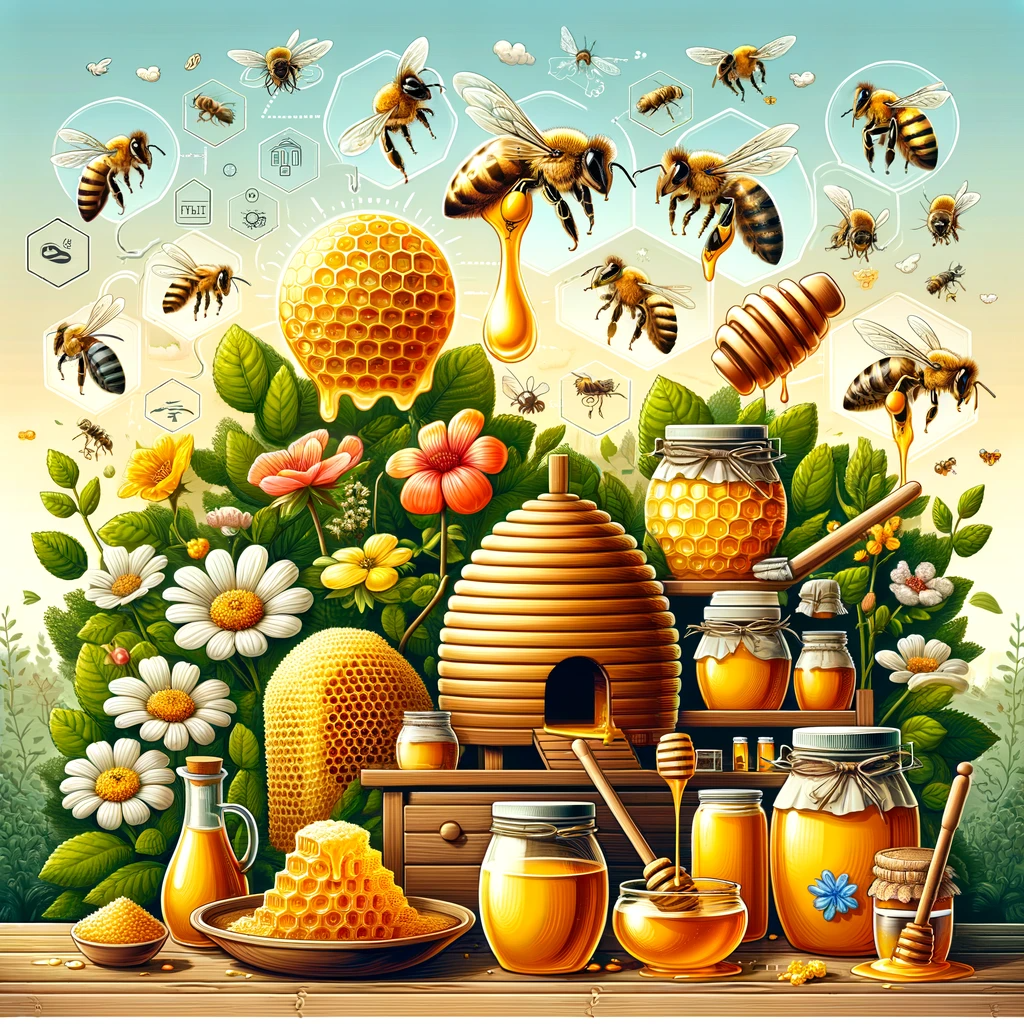Introduction
Crystallized honey, also known as granulated honey or creamed honey, is a fascinating natural phenomenon that often leaves people puzzled. Many assume that crystallization is a sign of honey going bad, but that’s far from the truth. In this article, we will delve deep into the science behind crystallized honey and help you understand its ingredients.
The Honey Composition
Main Ingredients
Honey primarily consists of three key ingredients:
- Fructose: This natural sugar makes up the majority of honey’s composition, typically accounting for around 38% to 44% of its content. It gives honey its sweetness and helps in the crystallization process.
- Glucose: Glucose is another essential sugar in honey, making up approximately 30% to 35% of its composition. It also plays a crucial role in crystallization.
- Water: Water content in honey varies but usually falls between 17% to 20%. The low moisture level is essential in preventing spoilage and aiding in crystallization.
Minor Ingredients
Honey contains trace amounts of various other components, including:
- Enzymes: Honey contains enzymes like glucose oxidase, which produces hydrogen peroxide, a natural antiseptic.
- Acids: Organic acids like gluconic acid contribute to honey’s acidity and help in preserving it.
- Amino Acids: Honey contains small amounts of amino acids, the building blocks of proteins.
- Vitamins and Minerals: These include B vitamins, vitamin C, and minerals like calcium and iron, although in modest quantities.
The Crystallization Process
Crystallization is a natural process that occurs when honey transforms from a liquid state to a semi-solid or solid state. Here’s how it happens:
Saturation Point
- High Sugar Concentration: Honey’s high sugar content, mainly fructose and glucose, makes it prone to crystallization. When these sugars are concentrated enough, they start to form crystals.
Nucleation
- Presence of Seed Crystals: Crystallization begins with the presence of tiny seed crystals in the honey. These can be naturally occurring or introduced inadvertently.
Chain Reaction
- Domino Effect: Once seed crystals form, they serve as templates for more sugar molecules to attach to, leading to a chain reaction. This results in the formation of a crystalline structure.
Temperature and Time
- Temperature Influence: Crystallization is influenced by temperature. Honey with higher glucose content crystallizes faster and at higher temperatures.
Types of Crystallized Honey
Fine Crystals
- Creamed Honey: Fine crystals result in a smooth and creamy texture. This type of crystallized honey is often intentionally produced for its desirable spreadable consistency.
Large Crystals
- Chunky or Grained Honey: Large crystals create a thicker, more granular texture. Some people prefer this texture for its unique mouthfeel and flavor.
Factors Influencing Crystallization
Several factors can influence the crystallization rate and type of crystals formed:
- Temperature: Lower temperatures accelerate crystallization.
- Honey Variety: Different types of honey crystallize at varying rates due to their unique sugar compositions.
- Moisture Content: Lower moisture levels favor crystallization.
- Storage Conditions: Exposure to temperature fluctuations can accelerate or slow down the process.
Is Crystallized Honey Safe to Eat?
Absolutely! Crystallization does not spoil honey; it simply changes its texture. In fact, many people prefer crystallized honey for its spreadability and unique taste. To liquefy crystallized honey, gently warm it by placing the container in warm water.
Conclusion
Understanding the science behind crystallized honey and its ingredients can demystify this natural occurrence. Honey’s high sugar content, especially fructose and glucose, plays a central role in crystallization. Factors like temperature, honey variety, moisture content, and storage conditions influence the crystallization process. Whether you enjoy creamy or chunky honey, rest assured that crystallized honey is safe to eat and offers a delightful twist to your culinary experiences.
